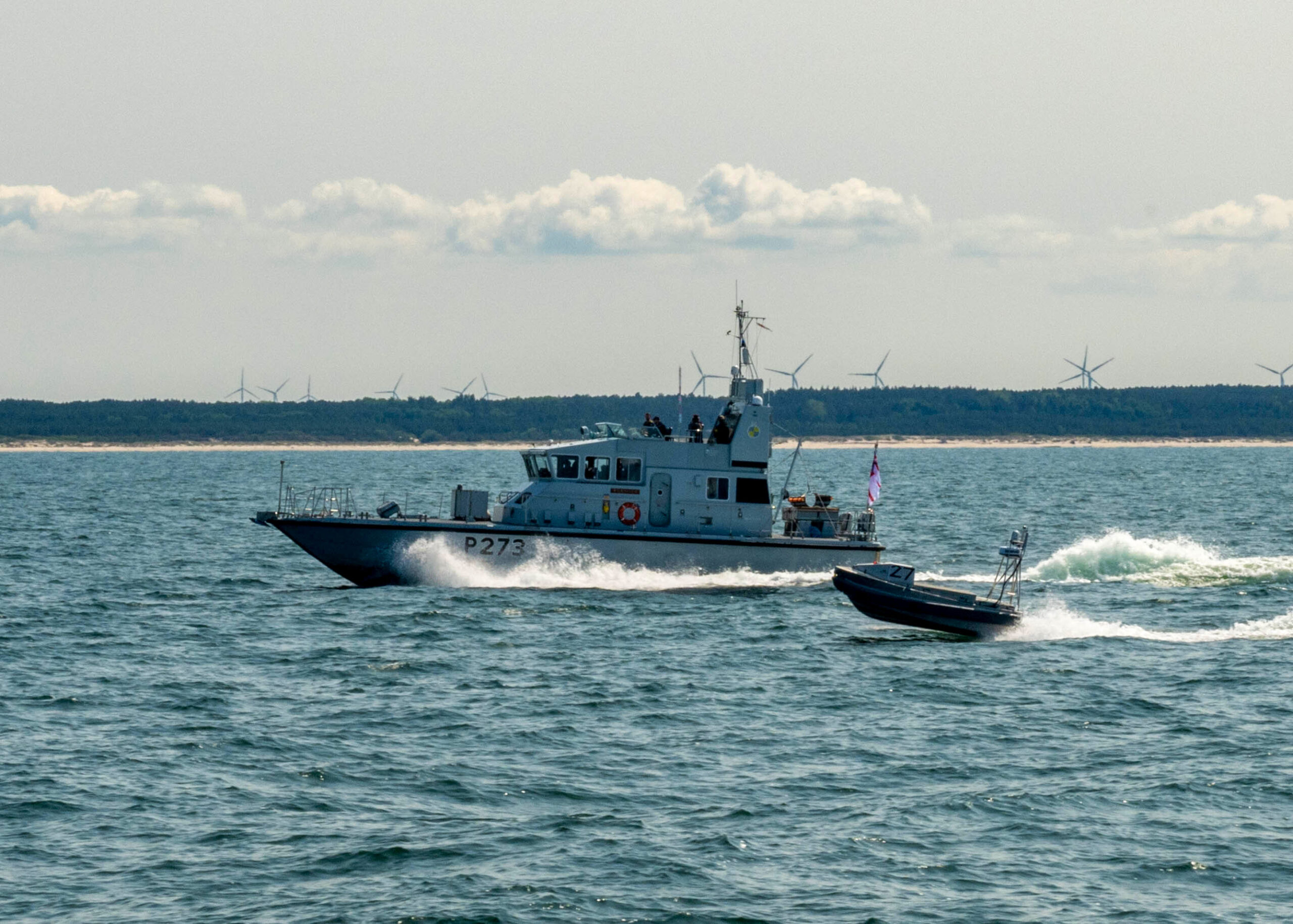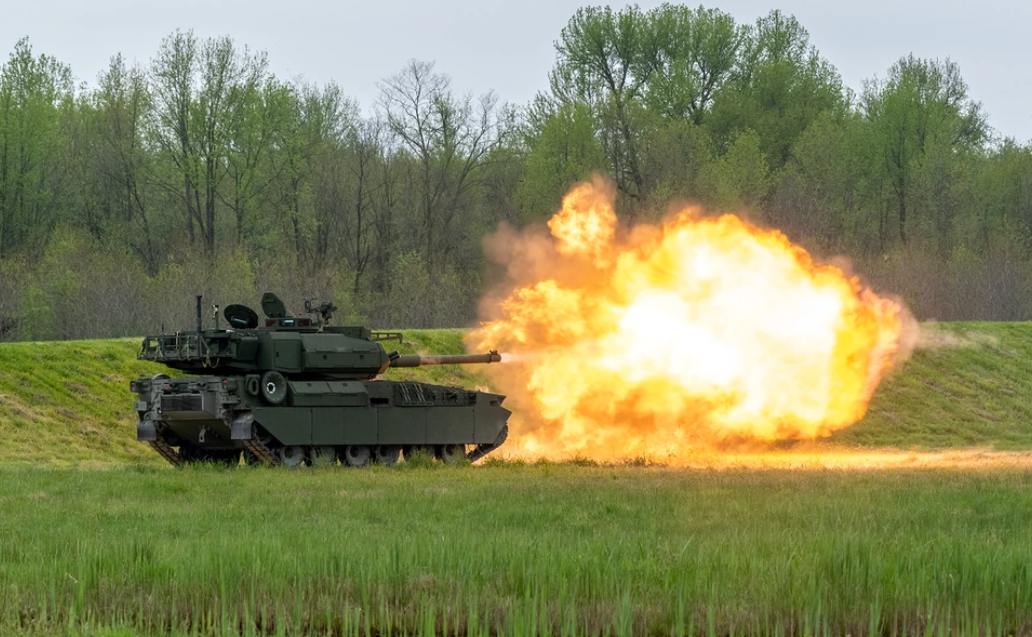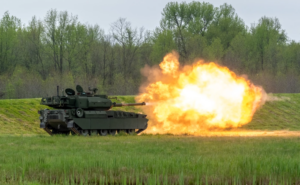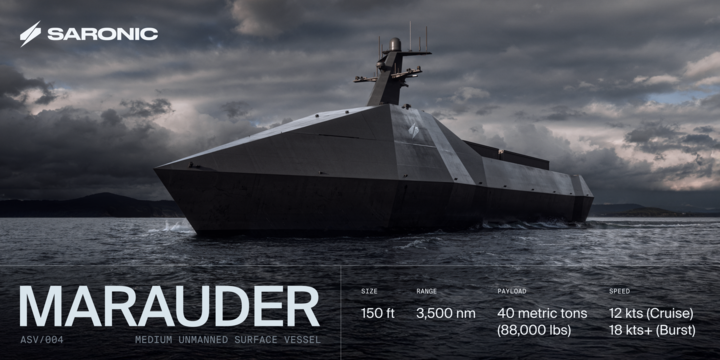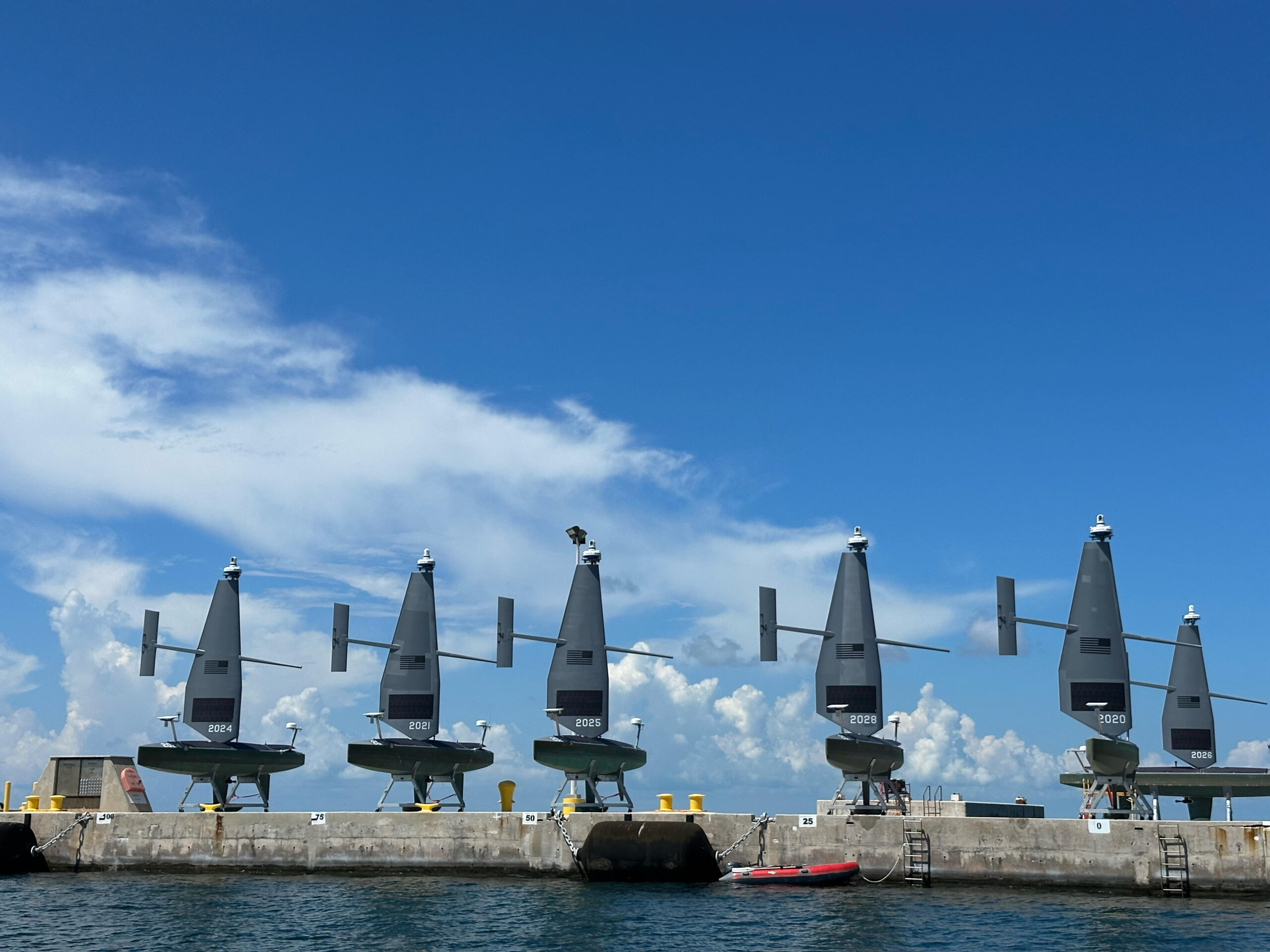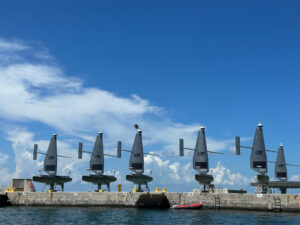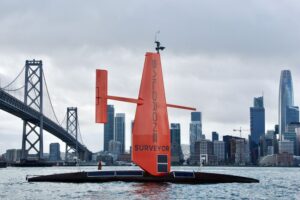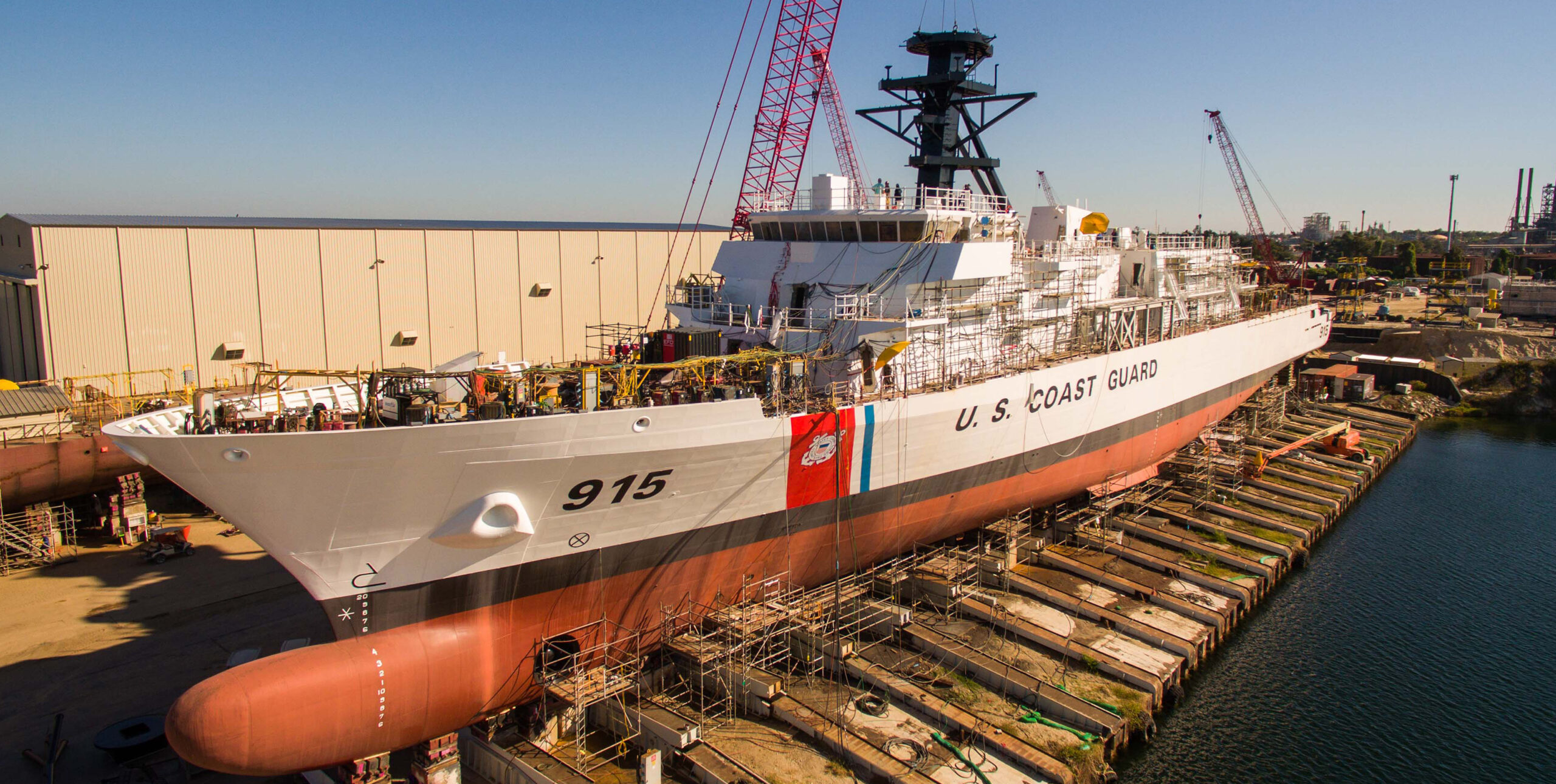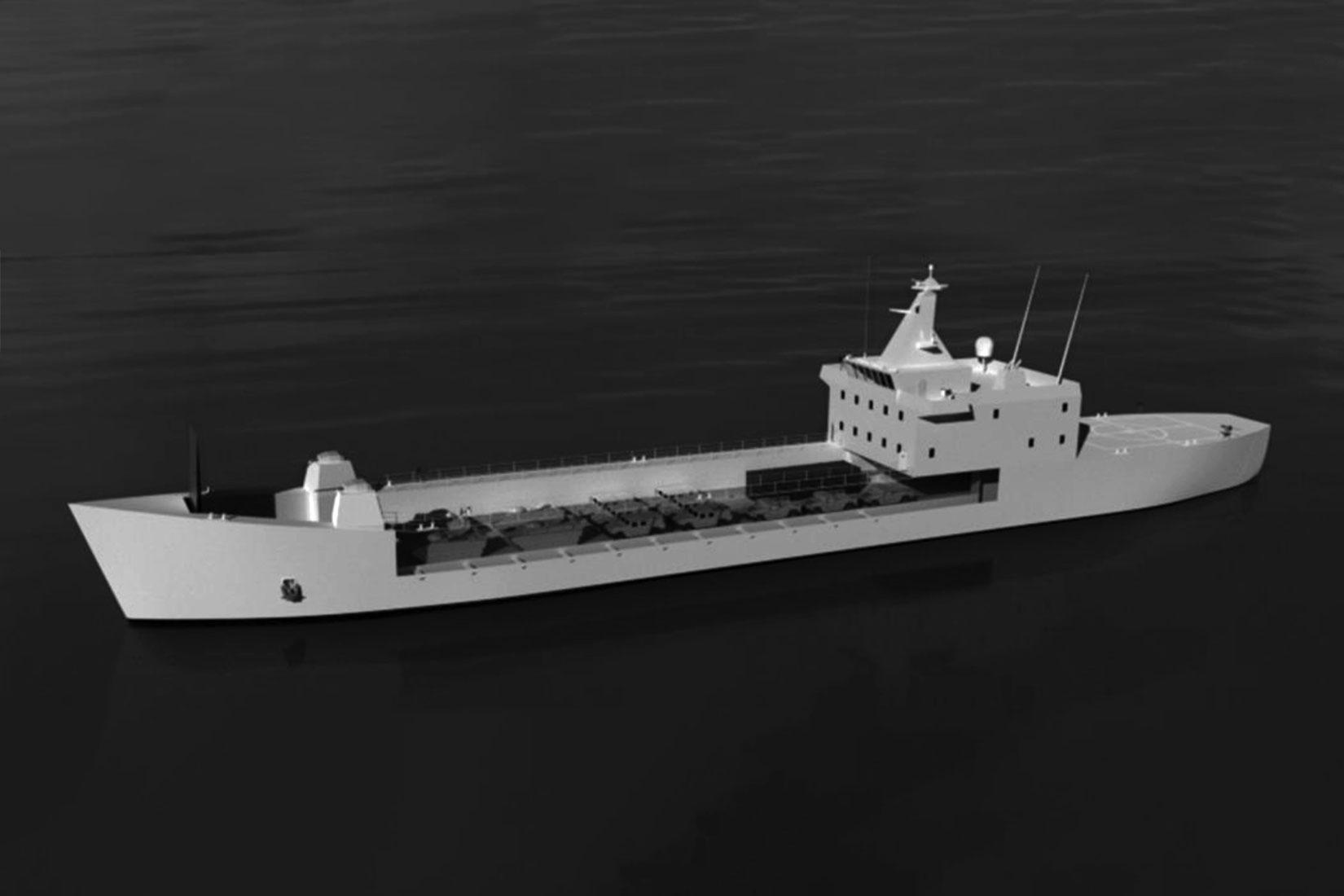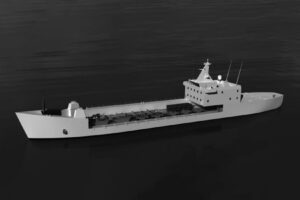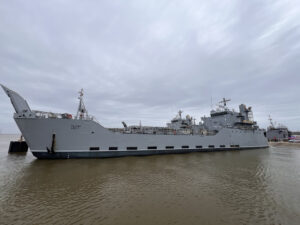The head of a Navy task force focused on evaluating and using lower cost unmanned systems for 6th Fleet said recent testing at the Baltic Operations 2025 (BALTOPS) maritime exercise was the first time they brought these systems to test at scale with nearly two dozen systems.
Task Force 66 was established in 2024 under 6th Fleet to analyze and integrate low-cost robotic and autonomous systems that can help impose costs on adversaries.
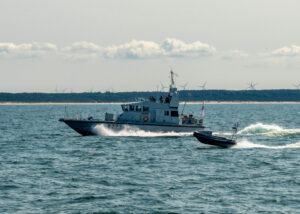
Task Force 66 is trying to “provide asymmetric dilemmas for the adversary to impose costs in their operations by having to deal with our asymmetric approaches. We use robotic and autonomous systems (RAS) to help with development of those dilemmas and to lower the risk to force, enrich the mission of operations by employing the RAS systems in that regard,” Rear Adm. Michael Mattis, Commander of Task Force (CTF) 66, told Defense Daily in a telephone interview.
He said the June BALTOPS exercise was unique in that they brought unmanned systems to the major regular exercise for the first time “at scale” with 22 unmanned surface vessels (USVs) that demonstrated tactics with Navy ships. They also acted as opposing forces for allied vessels to help other naval elements, like surface ships, familiarize themselves with the signature, capabilities and limitations of USVs.
Mattis said for the task force these vignettes were “good practice on developing some basic tactics, techniques and procedures on how we might generate an attack to create multiple dilemmas for them to defend against, and/or in order to generate surprise from the maritime environment for the attack to be more successful.”
He said CTF-66 is currently using three manufacturer-variant USVs: 10 HavocAI solar-powered electric motor Rampage USVs attritable contested logistics and maritime domain awareness, small SeaSat Lightfish solar-powered long-dwell USVs for maritime domain awareness USV, and BlackSea Global Autonomous Reconnaissance Craft (GARC) procured under the Replicator program.
Mattis noted the Rampage has a 300 nautical mile range, operates three to five knots but can sprint to 20 knots, and is cheap and attritable at under $100,000 per unit.
The smaller Lightfish USVs is a slower long-dwell vessel specialized only for maritime domain awareness mission, but is able to stay at sea for weeks to months at a time and can travel about about two to three knots but can sprint to five to 10 knots. Mattis said Lightfish is focused on low-speed loiter missions with a “very good camera and a good thermal camera on it as well, and some resilient communications methods that give us the ability to communicate with it via multiple mechanisms.”
Mattis also boasted Lightfish has a commercial radar and collision avoidance capabilities via LIDAR to avoid objects and meet COLREGS maritime collision avoidance regulations. However, the Lightfish is “a little more expensive than the HavocAI Rampages, runs probably between a quarter million and a half million dollars per unit, but again, very capable, long duration, dwell USV.”
He noted the third boat tested, GARC, is the U.S. Pacific Fleet’s one-way effector boat choice and they have 10 of the older prototype boats. He described GARCs as having a 500 nautical mile range, can reach 40 knots in their final attack mode, can cruise at 15 to 25 knots, and also “provide excellent maritime domain awareness in addition to their ability to be become interceptors or one-way attackers as needed.”

Mattis said the GARCs were used in red vs. blue skirmishes during BALTOPS as the opposing red forces.
He also told Defense Daily the Navy is focused on having sailors operate multiple unmanned systems at once, in contrast to Ukraine’s structure. Mattis also leads elements of Ukraine partner support, including intelligence sharing.
“One of the things that our partners do in Ukraine, that we do not do generally, is they are very much focused on a first person view, or FPV operations with USVs. They look at one operator, one USV as sort of a standard way to operate,” Mattis said.
The U.S. military does not believe they can scale USV operations appropriately with that FPV model, so they are working on “broader collaborative autonomy, where we have one operator on what we call that single pane of glass, to operate multiple UXS, unmanned systems in general more broadly, off of the same single pane of glass.”
Mattis confirmed CTF-66 has demonstrated up to 12 USVs and one Unmanned Aerial Vehicle operating with one operator at once and they have not reached the upper limit.
“We just haven’t done more than that, because we haven’t had the opportunity to have all of those assets together than sort of the one time we did that. But I think we’re fairly confident that we could operate with all 22 of our boats, if we needed to, and probably more than one UAS if needed to.”
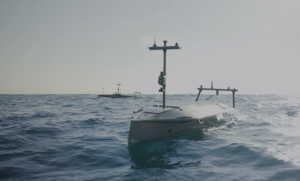
He described that one operator for multiple vehicles works because each platform has autonomy to keep it sailing or flying and avoiding obstacles, then interacting with a collaborative autonomy model that tells the vehicles to take on a mission.
Mattis compared it to running a play in football.
“You would give those robots a mission to go secure an area or go look in an area, or go defend an area, or go attack a boat, or go swarm a boat. There’s lots of ways that you could give it a play so that that formation could collaborate and accomplish that mission together. And so that’s how you get a single operator we call on the loop, not in the loop operating each one of those directly, not tasking each post directly, but like drawing a box on a chart, on the single pane of glass, and then tasking all those boats to go create a blockade In that box.”
